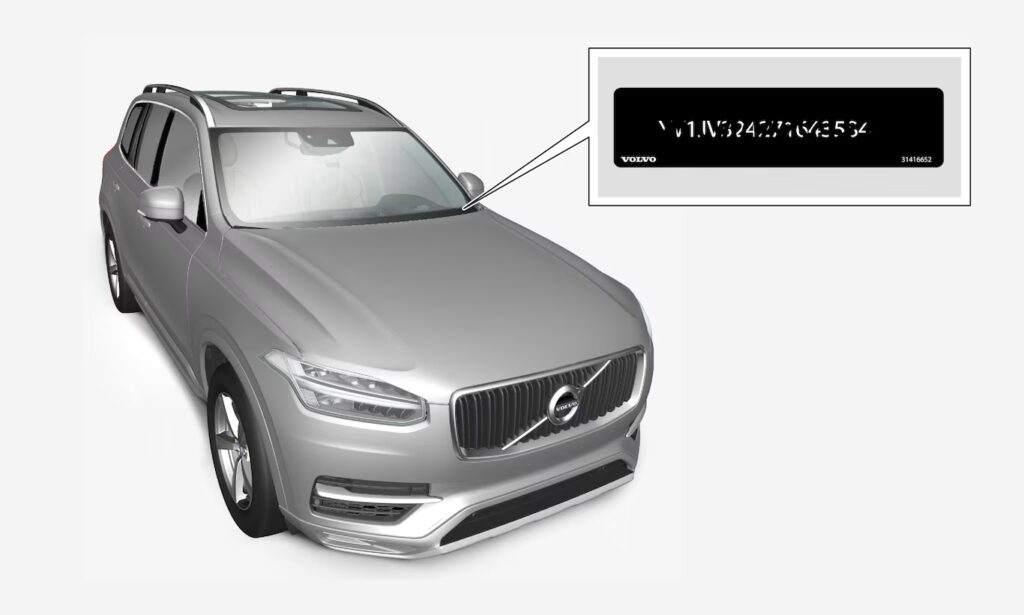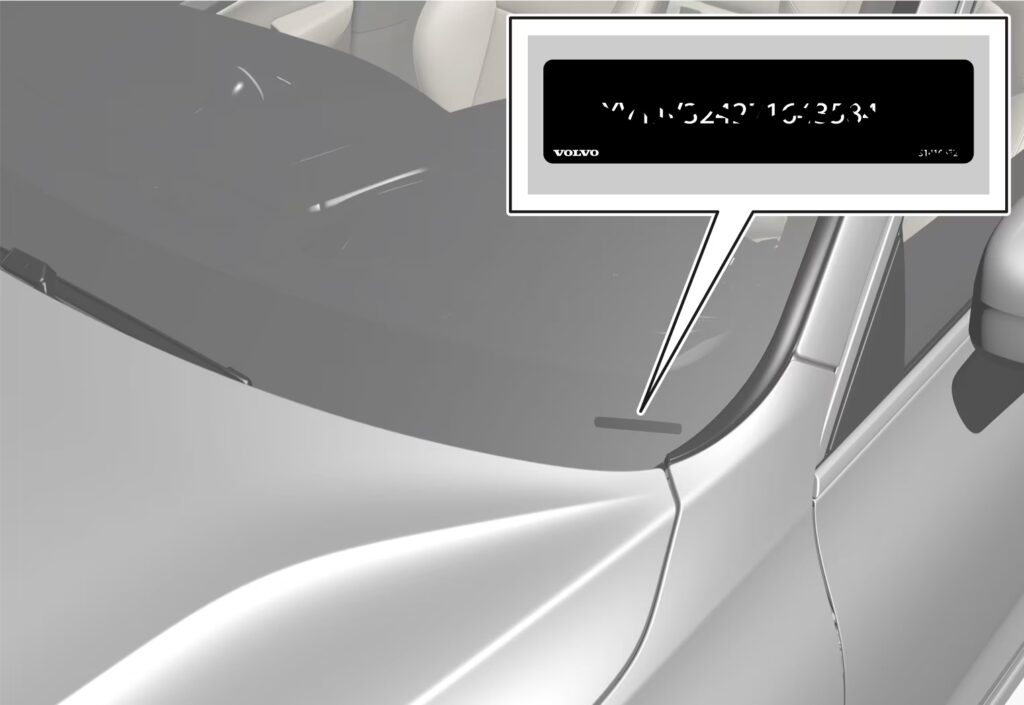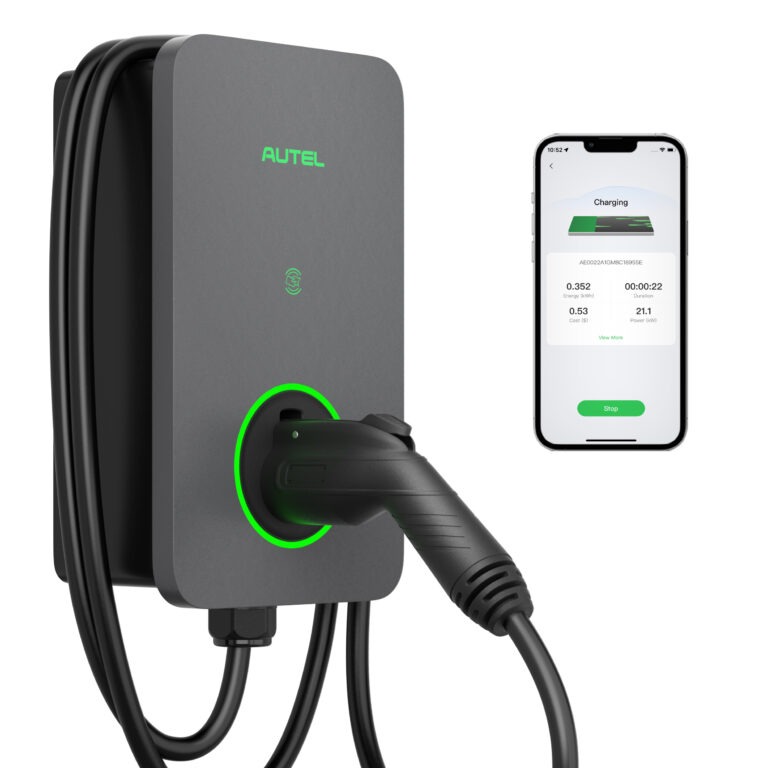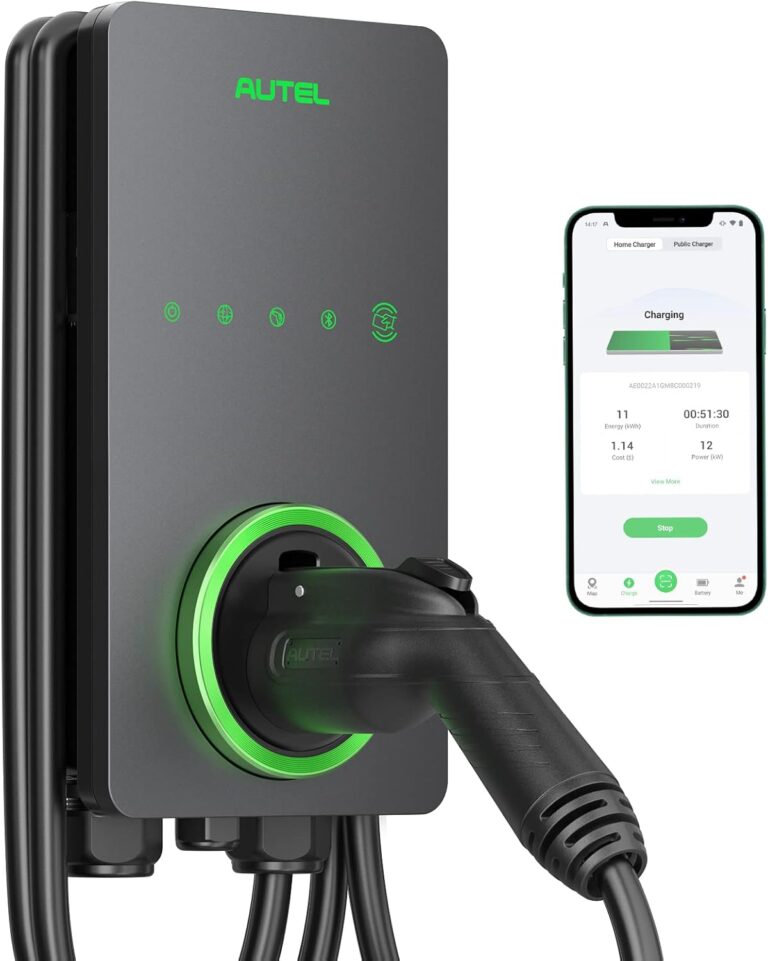 tab.
tab.Volvo VIN Decoder
Don’t risk hidden issues! Click ‘Check Any VIN Now’ to see recalls, problems, issues, and more! Just enter your VIN and email to get your report.
Free Volvo VIN Decoder
A Complete Guide To Volvo VIN Decoders!
What Is A Volvo VIN Number?
From the robust XC90 to the sleek S60, Volvo has carved a niche for itself by blending Scandinavian design with an unwavering commitment to safety and innovation. But even the most meticulously engineered Swedish masterpiece can hold secrets. Unlocking those secrets starts with a Volvo VIN decoder check – your key to understanding the unique story behind your Volvo.
In this article, we’ll discuss:
- What is a Volvo VIN Decoder? Think of it as a Swedish detective for your car. This 17-character code is more than just an identifier; it’s a vehicle’s autobiography, revealing its origins, specifications, and more.
- Decoding Your Volvo’s DNA: We’ll dissect each character of the VIN, from the birthplace of your Volvo to its model year, empowering you to decipher its unique genetic code.
- VIN Decoder Options: Free vs. Paid: Like choosing between a “fika” and a full-course meal, we’ll navigate the landscape of free and paid VIN decoders, helping you select the right tool for the job.
- The Anatomy of a Volvo VIN: We’ll delve into the structure of the 17-character VIN, revealing the significance of each section, from the world manufacturer identifier to the check digit.
- Hunting for Your Volvo’s VIN: No need to embark on a Viking raid. We’ll pinpoint the common VIN locations on various Volvo models, from the classic wagons to the modern SUVs.
- Digital Keys: Finding Your VIN Online: In our connected world, your VIN might be just a tap away. We’ll explore how to access your VIN through the Volvo Cars app or other official digital resources.
- Volvo VIN Decoder Codes: Unveiling the Details: This deep dive into Volvo-specific VIN codes will unlock details like body style, engine type, transmission, and assembly plant. It’s like reading the fine print of your Volvo’s story.
What Is A Volvo VIN Number
A Vehicle Identification Number (VIN) is a unique 17-character code assigned to every vehicle on the planet! It acts as the car’s fingerprint, containing important information such as the manufacturer, model, engine type, year of production, and plant location.
A VIN is essential for verifying a vehicle’s history and specifications, helping buyers and owners ensure the car matches its records and hasn’t been subject to issues like theft or accidents. Using a Volvo VIN decoder is an easy way to access this information.
Volvo is well known for prioritizing safety, innovative engineering, and long lasting reliability. These qualities make it especially important to verify the details of any Volvo through its VIN. A Volvo VIN check ensures the vehicle meets Volvo’s high standards and gives insight into its maintenance and ownership history.
So, if you’re considering a pre-owned Volvo or confirming the details of your current vehicle, a Volvo VIN check helps avoid unexpected issues and gives you confidence in your decision.
Decodeing A Volvo - What Does A Volvo VIN Look Like?
- WMI Examples:
- YV1: Volvo passenger cars.
- YV2: Volvo heavy trucks.
- YV4: Volvo SUVs (e.g., XC models).
- VDS Examples:
- First three characters: Model and body style (e.g., XC60, S90).
- Fourth to eighth characters: Engine type, transmission, and safety features.
- VIS Examples:
- Year of manufacture (10th character: A = 2010, B = 2011, etc.).
- Plant code and serial number.
- WMI Examples:
- this is what a Volvo VIN example should look like:
YV1MW295862178446- YV1 = Volvo passenger car.
- M = XC70.
- W = AWD.
- 29586 = Model specifics.
- 2178446 = Serial number.
Volvo VIN Decoder - All Codes
Manufacturer Codes
| Code | Manufacturer |
|---|---|
| 4V2, 4V4, 4V5, 4VG, 4VH | Volvo USA |
| YB1, YB2, YB3 | Volvo Europa (Belgium) |
| YV1, YV2, YV4, YV5, YVZ | Volvo Sweden |
Model Codes
| Code | Model |
|---|---|
| A | 240 |
| C | XC90 |
| F | 740 |
| G | 760 |
| H | 780 Bertone Coupe |
| J | 940 |
| K | 960, S90, V90 |
| L | 850, S70, V70 (1991-2000) |
| M | S40, V50, C70 (after 2004) |
| N | C70 |
| R | S60 |
| S | V70, VC70 (after 2000) |
| T | S80 |
| V | S40, V40 (1994-2004) |
Body Type Codes
| Code | Body Type |
|---|---|
| C | Convertible |
| H | AWD Sedan |
| J | AWD Station Wagon |
| K | Coupe with Airbags |
| M | 4WD XC90 |
| N | 2WD XC90 |
| S | Sedan with Airbags |
| T | AWD Sedan |
| W | Wagon or 5-Door Hatchback with Airbags |
| V | AWD Wagon or 5-Door Hatchback |
| Y | XC90 with Three-Row Seating |
Engine Codes
| Code | Engine |
|---|---|
| 69, 79 | 2.5 L |
| 80-84 | 2.3 L |
| 85 | 4.4 L |
| 86-89 | 2.3 L Turbo |
| 90 | 2.8 L Turbo |
| 92 | 2.4 L |
| 93 | 2.5 L |
| 95, 96 | 3.0 L |
| 98 | 3.2 L |
| 99 | 2.5 L or 3.0 L Turbo |
Plant Codes
| Code | Plant |
|---|---|
| 0 | Kalmar, Sweden |
| 1 | Gothenburg, Sweden |
| 2 | Ghent, Belgium |
| 3 | Halifax, Canada |
| A, J | Uddevalla, Sweden |
| F | Nedcar, Born, Netherlands |
Table of Contents
Where To Find The VIN On A Volvo XC40
(2018–Present)
- Dashboard: Clearly visible through the windshield’s lower-left corner from outside.
- Driver’s Side Door Frame: Inside the B-pillar, near the latch, printed on a compliance label.
- Engine Bay: Stamped on the firewall or chassis near the front strut tower.
- Paperwork: Found in title, registration, insurance, and service records.
Where To Find The VIN On A Volvo XC60
(2008–Present)
- Dashboard: Located at the lower-left windshield corner, readable from outside.
- Driver’s Side Door Frame: Inside the B-pillar, printed on a factory compliance sticker.
- Engine Bay: Stamped on the firewall or front subframe.
- Paperwork: Listed in ownership documents, warranty records, and insurance.
Where To Find The VIN On A Volvo XC90
(2002–Present)
- Dashboard: Clearly displayed through the driver’s side windshield, lower-left area.
- Driver’s Side Door Frame: Found inside the B-pillar, near the latch, on a compliance label.
- Engine Bay: Stamped on the firewall or chassis near the front crossmember.
- Paperwork: Documented in title, warranty, and registration papers.
Where To Find The VIN On A Volvo S60 (2000–Present)
- Dashboard: Visible at the lower-left corner of the windshield, near the defroster vent.
- Driver’s Side Door Frame: Located inside the B-pillar, printed on a compliance sticker.
- Engine Bay: Stamped on the firewall or front chassis crossmember.
- Paperwork: Recorded in registration, insurance, and title documents.
Where To Find The VIN On A Volvo S90
(2016–Present)
- Dashboard: Found at the lower-left windshield corner, readable from outside.
- Driver’s Side Door Frame: Inside the B-pillar, printed on a factory label.
- Engine Bay: Stamped on the firewall or front strut tower.
- Paperwork: Listed in registration, warranty, and insurance records.
Where To Find The VIN On A Volvo V60
(2010–Present)
- Dashboard: Clearly visible through the windshield’s lower-left area.
- Driver’s Side Door Frame: Inside the B-pillar, printed on a compliance sticker.
- Engine Bay: Stamped on the firewall or chassis near the radiator support.
- Paperwork: Found in ownership documents, warranty records, and insurance.
Where To Find The VIN On A Volvo V90
(2016–Present)
- Dashboard: Found at the base of the windshield, driver’s side.
- Driver’s Side Door Frame: Located inside the B-pillar, printed on a factory label.
- Engine Bay: Stamped on the firewall or front suspension mount.
- Paperwork: Listed in title, warranty, and registration papers.
Where To Find The VIN On A Volvo C40 Recharge
(2021–Present)
- Dashboard: Clearly displayed at the lower-left windshield corner.
- Driver’s Side Door Frame: Found inside the door jamb, near the latch.
- Engine Bay: Stamped on the firewall or front subframe.
- Paperwork: Located in title records, registration, and service documents.
Where To Find The VIN On A Volvo EX30
(2024–Present)
- Dashboard: Clearly visible through the lower-left windshield.
- Driver’s Side Door Frame: Inside the B-pillar, next to the latch.
- Engine Bay: Stamped on the firewall or front crossmember.
- Paperwork: Found in registration, insurance, and service records.
Where To Find The VIN On A Volvo EX90
(2024–Present)
- Dashboard: Displayed at the lower-left windshield corner, visible from outside.
- Driver’s Side Door Frame: Inside the B-pillar, printed on a compliance label.
- Engine Bay: Stamped on the chassis frame near the front suspension.
- Paperwork: Documented in title, registration, and insurance records.
Where Can I Find My Volvo VIN?
- Dashboard (visible through the windshield).
- Driver’s side door frame or pillar.
- Engine bay.
- Vehicle registration documents, insurance cards, and service records.
Find My Volvo VIN In The App
In the Volvo Cars app:
 tab.
tab.Find My Volvo VIN On The Dashboard
How to find a Volvo VIN in the dashboard:

Find My Volvo VIN On The 9" Sensus Touch Screen
1. In the car’s centre display, select Settings in the top view.
Find My Volvo VIN On The 7" Sensus Touch Screen
Find My Volvo VIN In Service and Warranty Book/Registration Document
The VIN can also be found on the first page of the service and warranty booklet or in the car’s registration document.
Volvo VIN Number Location
This is an XC60, but the VIN is generally in the same location on all models.

Discover the value of your cars options and specification!
- Select from thousands of vehicles and options
- See how each option adds value to your car
- Discover which tech features add a premium
- Spot which options hold their value over time
- Find out if that 'Sport' package pays off later
- Identify high value features others miss
$355 $354 $353 $352 $351 $350
How To Spot A Fraudulent Volvo VIN
1. Mismatched VIN and Car Details
Description: A fraudulent VIN may not match the actual vehicle’s make, model, or other specifications. For example, the VIN may indicate a Volvo XC90, but the car in question is an S60.
What to Look For:
Model and Year Mismatch: Use the 10th character of the VIN to confirm the production year, and ensure it aligns with the vehicle’s appearance and registration year.
Incorrect Vehicle Type: Check if the VIN specifies a body type (e.g., sedan, SUV, or wagon) that doesn’t match the actual vehicle.
Engine and Transmission Discrepancies: Decode the VIN to verify the engine type, fuel type, and transmission. For example, if the VIN states a T6 engine but the car has a T8 hybrid, it’s a red flag.
What to Do:
Cross-reference the VIN details using a reliable Volvo VIN decoder or a Volvo VIN check service.
Compare the VIN to the information on the title, registration, and insurance documents.
2. Signs of Tampering
Description: Fraudulent VINs are often altered to hide a car’s true history, such as theft, salvage, or cloning. Tampering can involve physically modifying the VIN plate or replacing it with a counterfeit one.
What to Look For:
Scratches or Alterations: Inspect the VIN plate on the dashboard and door frame for scratches, discoloration, or signs of adhesive residue. These could indicate the original plate has been removed or replaced.
Irregular Fonts or Alignment: Legitimate VIN plates use consistent fonts and spacing. Look for characters that are unevenly spaced or don’t match the standard format.
Mismatched Locations: Check all locations where the VIN is listed (dashboard, door frame, engine bay, and documentation) to ensure they match. If the VIN differs in one location, it could indicate tampering.
Fake Stickers or Plates: Some counterfeit VIN plates use low-quality materials or lack the manufacturer’s original markings.
What to Do:
Have the VIN inspected by a professional, such as a licensed mechanic or dealership.
If tampering is suspected, report the issue to local authorities or your Department of Motor Vehicles (DMV).
How To Use Your Volvo VIN Effectively
How To Check For Volvo Recalls - Official Website
Purpose: Volvo issues recalls to address safety concerns or defects in specific vehicles. Using your VIN ensures you receive recall notifications for your exact car.
How to Check:
Visit Volvo’s official website or recall portal.
Enter your VIN in the recall lookup tool.
Review any open recalls and follow the instructions to have the issues addressed, often at no cost to you.
Why It Matters: Staying on top of recalls ensures your Volvo operates safely and meets regulatory standards. Neglecting recalls can result in accidents or void warranties.
How To Access Volvo On Call or Warranty Services
Purpose: Volvo uses VINs to manage service records, warranties, and access to features like Volvo On Call (a subscription-based connected services platform).
How to Use Your VIN:
Volvo On Call:
Use the VIN to activate your account on the Volvo On Call app, which provides remote start, vehicle location, and diagnostic information.
If you need technical support, the VIN helps Volvo identify your car’s specifications.
Warranty Verification:
If your Volvo is under warranty, the VIN allows service centers to confirm eligibility for free repairs or replacements.
Why It Matters: Using your VIN ensures you maximize the benefits of your Volvo’s warranty and connected services, saving time and money on repairs or technical issues.
How To Order The Correct Volvo Parts Based on VIN
Purpose: Every Volvo is built with specific parts and configurations. Using the VIN ensures that any replacement parts match your car exactly.
How to Use Your VIN:
Provide the VIN to Volvo dealerships or third-party parts suppliers when ordering components like brake pads, filters, or electronics.
The VIN ensures compatibility for your car’s trim level, engine type, and regional specifications. For example:
A Volvo XC90 with a T8 hybrid engine requires different parts than a T6 petrol model.
European models may differ slightly from U.S. versions due to emissions and safety regulations.
Why It Matters: Ordering parts without verifying the VIN may result in incompatible components, leading to installation delays or further mechanical issues.
The Risks of Skipping a Volvo VIN Decoder
When purchasing a pre-owned Volvo, skipping a VIN check can expose you to hidden risks that may affect the vehicle’s safety, value, and legality. A Volvo VIN decoder provides essential details about the car’s history, specifications, and condition, helping buyers make informed decisions. Here are the risks of skipping this step, tailored specifically to Volvo vehicles:
Unresolved Recalls Could Jeopardize Safety
- Why It Matters: Volvo is renowned for its focus on safety, but unresolved recalls can compromise even the most well-designed vehicle. For example, recalls have been issued in the past for problems like defective seatbelts in Volvo XC60s or brake pedal issues in S60 models.
- Risk: If the previous owner ignored recall notices, the car might still have unresolved issues, posing a safety risk for you and your passengers.
- How You Can Avoid This: Using a Volvo VIN lookup tool, you can identify any open recalls on specific models like the XC90, XC40, or V60. This ensures you can address the recall with Volvo before driving the car.
Hidden Accident Damage May Lead to Costly Repairs
- Why It Matters: Volvo vehicles, such as the XC90 or S60, are engineered for durability, but damage from past accidents, especially those involving the frame or advanced safety systems can lead to ongoing issues. These may include misaligned suspension or problems with features like Pilot Assist or City Safety.
- Risk: Without knowing the accident history, you could unknowingly buy a car that’s been in a major collision. This not only leads to costly repairs but also reduces the resale value of the vehicle.
- How You Can Avoid This: A Volvo VIN decoder reveals whether the vehicle has been in accidents, the extent of the damage, and any reported repairs. It allows you to inspect the condition of critical systems, such as airbags and collision mitigation technologies, before finalizing the purchase.
Theft Records and Title Discrepancies Could Result in Legal Issues
- Why It Matters: Volvo vehicles are a popular target for theft due to their high resale value and desirable features. Models like the XC60 and V90 are often sought after, making it critical to verify their ownership history.
- Risk: A stolen or cloned Volvo might have altered documents or mismatched VINs, which could lead to the car being confiscated. Title discrepancies, such as salvage titles, can also make the car difficult to register.
- How You Can Avoid This: Cross-referencing the VIN through a Volvo-specific VIN check ensures the title is clean and confirms legitimate ownership. For example, a check can confirm whether the title history of a used XC90 matches the seller’s claims.
Verifying Odometer Accuracy To Avoid Fraud
- Why It Matters: Volvo owners often rack up high mileage due to the brand’s reputation for longevity, especially with models like the V70 or XC70. However, odometer fraud can mislead buyers about the car’s true condition.
- Risk: A Volvo with a tampered odometer might appear to have lower mileage, but the engine, suspension, and other components could be significantly more worn than expected. This can lead to unexpected maintenance costs.
- How You Can Avoid This: A Volvo VIN decoder includes odometer readings from past services or inspections. This allows you to compare historical mileage with the current reading, helping you identify any inconsistencies or potential fraud.
Ensuring the Vehicle’s Specifications Match Its Description
- Why It Matters: Volvos come with a range of trims, engine options, and features that vary significantly between models. For example, an XC40 may be marketed as an all-wheel-drive T5 Inscription, but it could turn out to be a front-wheel-drive T4 Momentum if the VIN isn’t verified.
- Risk: If the vehicle’s advertised specifications are inaccurate, you might end up overpaying for a base model instead of a higher trim with premium features like a panoramic roof, Harman Kardon audio, or advanced driver-assistance systems.
- How You Can Avoid This: A Volvo VIN decoder will check the vehicle’s exact trim, engine, and factory-installed options, ensuring the car matches the seller’s description. For instance, if the seller claims the car is a V90 Cross Country but the VIN shows it’s a standard V90, you’ll know to ask questions or walk away.
Real World Example
Imagine purchasing a pre-owned Volvo XC90. The seller advertises it as a low mileage T8 Recharge plug-in hybrid. After buying it, you discover the vehicle has unresolved brake recalls, prior accident damage to the front collision sensors, and a tampered odometer. Worse, the title reveals it’s actually a salvaged T6 petrol model. A simple Volvo VIN check would have uncovered these issues before purchase, saving you thousands in unexpected costs and legal troubles.
Unlock accurate valuations for your car’s features in seconds – find out what your options are worth today and in the future.




